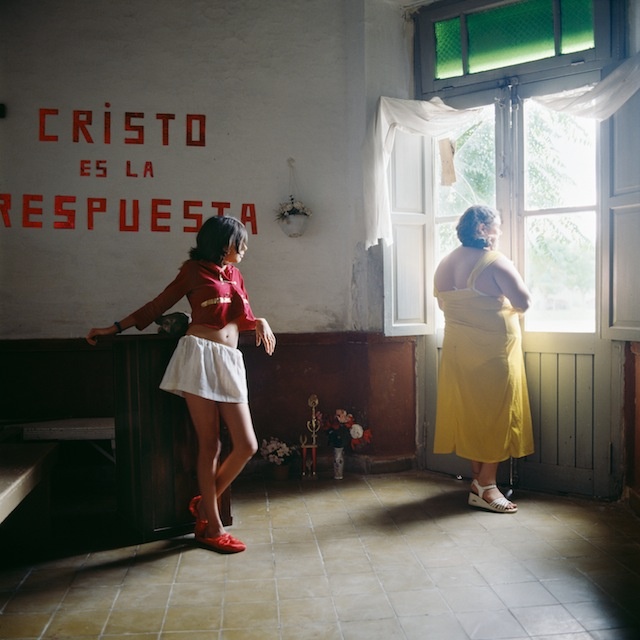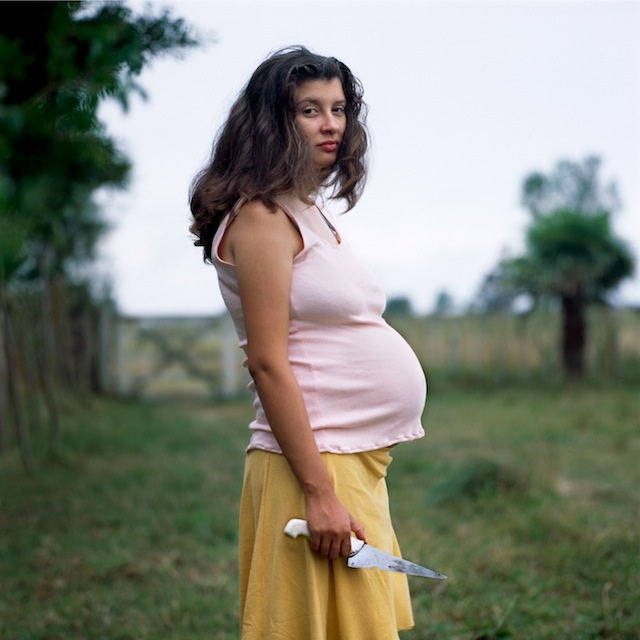
Annons

Alessandra Sanguinetti: Well, I lived in Argentina until I was 30, and that’s where I shot On the Sixth Day and The Adventures of Guille and Belinda. I was halfway through working on Guille and Belinda when I moved here and the first chapter of the work was done, so it affected me in a practical sense – I wasn't there for Belinda's wedding.But it affected me more in an intangible way. I had underestimated how connected I was to Argentina, how much of what I was passionate about lay there. And I underestimated how circumstance and the passage of time changes you. I left with several ideas, leads I was excited to begin, and I just assumed I'd take up where I left off in the future. But it doesn't work that way. When I returned, those little sparks were gone and I didn't see things the same way. There's a moment for everything, and then the moment is gone and you have to move on.
Annons
I've worked on various projects since then, which – among others – include "Palestine" and, just recently, a short book on family life here in San Francisco, called "Sorry, Welcome". It's published by TBW books and it's coming out very soon.

We all, at some point, realise that everything is transitory. And when I was a kid, taking photos was my way to make life a little more permanent. Taking pictures was my way of corroborating and synchronising what I saw with what I felt, and of connecting the dots. Of finding links between arbitrary events, or a pattern within the chaos. Eventually, if you pay attention, you begin building stories and making some sense of things. And after finding a pattern we can recognise, it makes it easier to get through the day.Do you think that realisation you had has directed your work, too? There seems to be a focus on young women, or children in general, and their transition into adulthood. Even your work in Palestine was strongly focused on children.
Children are fascinating. We were all children once, and most of who we are was defined in our childhood. As a society, we project so much of our hopes, frustrations, denials and aspirations on children, and they are so transparent in how they reflect everything that is thrust upon them. How could I not photograph them? Plus, there's all this conversation that needs to go on with adults, which I'm not great at. With kids, I just get to the heart of the matter.
Annons

That’s a project I had in my mind way before I started it. I spent a lot of time in the countryside as a kid and was aware even then that there were stories there that hadn't yet been told, at least in a visual way. In all the work I saw, except in music and literature, the countryside was portrayed as an empty, lifeless space. Maybe that's because of the nature of the landscape and a certain romanticisation of farming life that ignores any cruder realities, but I always saw much going on there that was taken for granted – a continuous and intense drama going on day after day between the animals, and between them and the people who raise them. Being cornered into a corral is a banal event for us, but it's an extraordinary one for the cow, and I sought to structure the work around this idea.And the religious reference in the title, was it in any way negative? Do you think it was it judging the way humans kill animals, or more just a blank observation?
In the beginning, I was a bit judgmental, sure. I was more sentimental and opinionated back then. And I also know that all that melted away as I paid more and more attention to what was in front of me and listened to the work. That's the wonderful part, how the work changes you. One always thinks that one is shaping the work, that you're in control. But if you're really immersed in it and are paying close attention, the work shapes you and you come out of it hopefully a bit wiser and humbler.
Annons

It was very organic, the way it started. I hadn't set out to look for two girls like that. They were there and it just happened in a very natural way; they already knew me. I was always round at their grandmother's house, photographing animals. I was the girl who was always with a camera. I think they find it stranger when I’m around them and I’m not taking pictures. In the beginning, when they were nine, I would bring back prints of their pictures to show them. Then, when they grew older and childhood was becoming a memory, they started to appreciate the work in a deeper way.How aware are they of the fact that they're famous?
They're aware that their relationship has a life outside them. But you know, they are in their world, their life, and it doesn't intersect with the world the work circulates in, except for when it's being published or shown in Argentina.

I don’t think about that so much. You know, people question all kinds of works for different reasons, and sometimes it’s just plain curiosity – when they see 50 pictures of the same girls, they have these questions. There are people who read a poem and are transported, and that's enough. Others will want to know why they are touched and will analyse its metre, and so on. Others will only see disjointed words and strange connections, and at some point we all do one or the other. And with photography, because of its nature, this question on the truthfulness of an event come up very often.
Annons
Work that is done to send a message or make a commentary would be more in the realm of illustration or propaganda. I don't think of an audience when I'm in the middle of work. It would be stunting. I'd just say I pay attention to certain people, places, relationships and events that move me, and I try to articulate the connections I see and the stories that arise out of them in the best way I know how. And yes, I do hope I can share them with other people. Sharing stories and leaving a record of lives lived is at the heart of it all.Click through to see more photography by Alessandra Sanguinetti.








